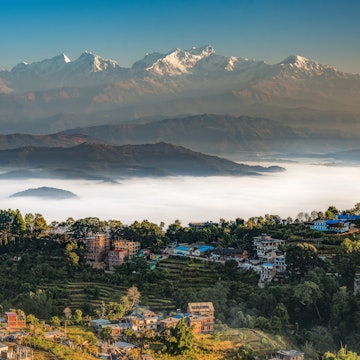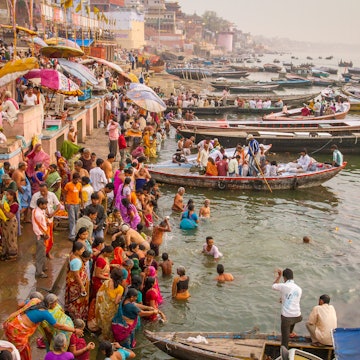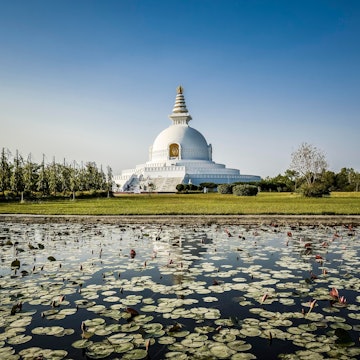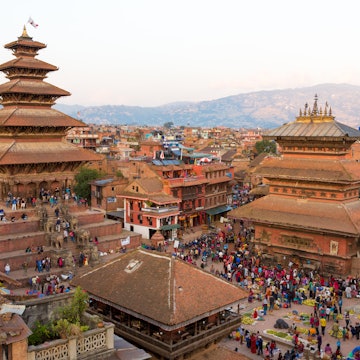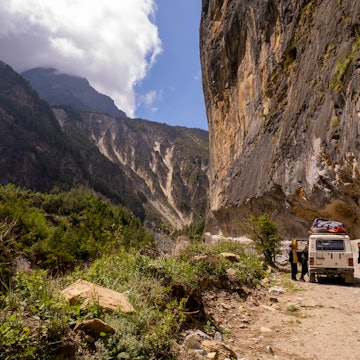
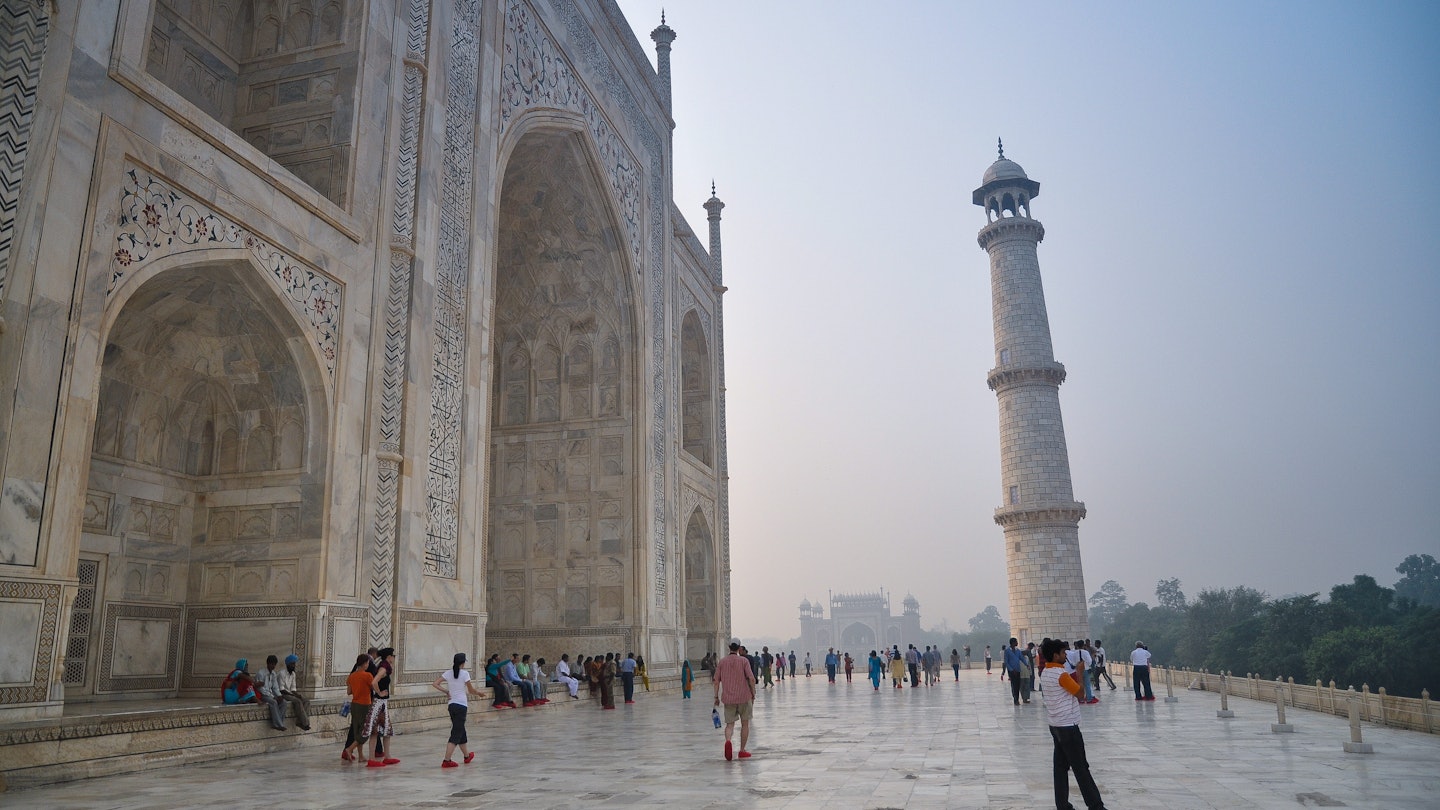
We answer your first-timer's questions about travel in India, including the best time to see the Taj Mahal. Aris Abdullah/Shutterstock
Colorful, chaotic, crowded – all the cliches about India are true, as are the tropes of culture shock, sensory overload and land of contrasts. It is a huge country with different cultures and customs across its length and breadth. A bewildering array of sights, sounds and smells greet you as you navigate the fast-paced cities where highrises stand cheek by jowl with slums, and yes, there are indeed cows on (some of) the streets. But this is also the land of majestic mountains, sandy beaches, scorching deserts and thriving forests, not to mention opulent palaces, awe-inspiring heritage sites, pulsating cities and enchanting villages.
The capital city of Delhi impresses with its historical monuments and stately demeanor while the financial capital of Mumbai will draw you in with its cosmopolitan vibe and rich art and culture scene. Then there’s the Taj Mahal in Agra and the state of Rajasthan with its many palaces, forts and unmatched hospitality. Goa is where you go to soak in the sun and sand (and to party) while further south, Kerala beckons with its languid backwaters and Ayurveda-led wellness experiences.
A word of caution – do not attempt it all. It would take a lifetime (and some more) to see India in its entirety. Pick a region or two to explore on your first trip, and return for more.

When should I go to India?
Given its vast size and varied topography, India’s climate is quite diverse and the best time to visit depends on your planned destinations. In the north, summer is arid while winter can be bone-chillingly cold.
In the west and east, it’s generally hot and humid for the most part of the year while the south is more salubrious but wet. The monsoon season (generally June to September) can be a challenging time to travel through most of the country, but this is the best time to visit the high-altitude region of Ladakh. This is also when the Indian festival season starts in earnest, so if you want to witness the colorful Rath Yatra of Lord Jagannath in Puri, Odisha or the spectacular public celebration of Ganesh Chaturthi in Mumbai, or the thrilling boat races in Kerala, this is the time to visit.
In general, northern hemisphere winter (December to March) is the best time to visit India to make the most of its leading attractions. However, it is also peak travel season, so be prepared for tourist crowds and higher prices, particularly in Rajasthan, Goa and Kerala. The shoulder season from October to November is a better option, particularly if you want to go trekking in the Himalayan foothills or experience the festival of Diwali with lights and fireworks or visit Pushkar for the annual Camel Fair. Most festivals in India follow the lunar calendar and dates change every year, so check before planning your trip.
How much time should I spend in India?
India is not a weekend break or even a quick 4 to 5 days’ jaunt; you will need at least five days to cover just the so-called Golden Triangle of Delhi, Jaipur and Agra. Add to this another destination in Rajasthan – Udaipur, the magical city of lakes or the golden city of Jaisalmer in the Thar desert are good options – plus a few days in Mumbai and/or Goa, and you’re looking at 10 days; better yet, make it two weeks to slow down and take it all in.
For a first-time visitor, with the luxury of time, three weeks would be ideal to get a real taste of India, giving you a chance to travel further south to Kerala and perhaps to Bengaluru for its burgeoning dining scene, brewpubs and specialty coffee culture. From here, take a road trip to explore the UNESCO World Heritage Site of Hampi and admire the magnificent ruins of one of India’s greatest empires. Round it off with a day or two in Puducherry (Pondicherry), a former French colony, to soak in the blend of Tamil culture and French charm.

Is it easy to get in and around India?
Most major Indian cities have international airports, including Delhi, Mumbai, Jaipur, Kochi and Goa (which has two). These are well-connected with direct or stopover flights from North America, Europe, Middle East, Australia and other parts of the world.
The domestic airline network is also wide and far-reaching, so most cities are only a short flight away. India’s extensive railway network is also a great way to travel between cities and smaller towns, and is particularly safer if you want to travel overnight. Trains offer classes of services at different price points, such as chair cars, sleepers, air-conditioning (AC), non-AC, etc. Inter-city buses run by state and private operators are another affordable option with many overnight services offering sleeper options.
Renting a car is comparatively more expensive but a convenient way to get around. A combination of expressways, national highways and state highways crisscross the country. Road conditions are variable and there is a certain disregard for traffic rules, so it’s advisable to hire a driver instead of driving yourself (remember that India drives on the left side of the road). Within cities, public transport options range from buses to trains to metro (Kolkata is the only city with a functioning, albeit slow tram service). Taxis and autorickshaws are easily accessible as are rideshare apps such as Uber and its Indian equivalent Ola.
Most Indian cities are not particularly walkable with the exception of certain neighborhoods in large cities. Also, depending on where you're visiting, the combination of heat, humidity, pollution and wild driving can make walking long distances an unpleasant experience.

Top things to do in India
It can be overwhelming to prioritize what to see and do in this continent-sized country; indeed the list of the best things to do in India can go on for pages. However, first-time visitors shouldn’t miss these experiences.
Gaze upon the Taj Mahal – at night
An icon of Incredible India, the Taj Mahal in Agra is an unmissable sight. This marble mausoleum built by the Mughal emperor Shah Jahan for his beloved wife, Mumtaz looks stunning at any time of the day but is particularly evocative at night. The Archaeological Survey of India (ASI) office on Mall Road sells nighttime visit tickets on evenings with a full moon; you can buy them in person 24 hours in advance and you will need to show your passport as ID.
Camp overnight in Rajasthan’s Thar Desert
India’s largest state is home to some of the most spectacular forts and palaces in the country. But beyond the bustling cities with its towering edifices, is the vast expanse of the Thar Desert with its rolling sand dunes, some rising more than 50m (164ft) high. Jaisalmer is your gateway to Sam Sand Dunes (40km/25 miles west) where you can embark on a camel safari, take in a spectacular sunset and spend the night in one of the desert camps pitched near the dunes.
Cruise Kerala's backwaters by houseboat
A lush green landscape crisscrossed by palm-fringed canals and rivers, dotted here and there with sleepy villages – the backwaters of Kerala offer a different glimpse of India. Houseboats ply these waterways and you can choose to take a half-day cruise or an overnight one; stop off at villages, learn to fish or simply watch the ever-changing scenery as you savor freshly-cooked food on-board. Most cruises start from Alappuzha (Alleppey), a small town south of Kochi; the quality of houseboats varies so it’s best to book one after personal inspection.
Explore untamed wilderness on a safari
The dense forests of India are teeming with wildlife, from tigers and leopards across northern and central India to lions in Gujarat, rhinos in Assam and elephants in Karnataka. There are more than 100 national parks in India that offer safari excursions through most of the year (with a break during the monsoon). Late summer gives you the best chance of spotting wildlife, particularly the big cats who venture out in the open in search of water. Safaris are tightly regulated and operated by government and forest authorities; they can be booked online or through your hotel.

My favorite thing to do in India
I’m a certified city girl but sometimes even I need a respite from the crowds, noise and pollution. Luckily, India offers many alternatives, whether it’s exploring small villages or the great outdoors. Punctuate your city jaunts with a short countryside amble. For example, if you’re traveling in Rajasthan, head to Ranthambhore National Park from Jaipur for a chance to spot tigers in the wild or add a village safari from Jodhpur to get a taste of rural life. From Mumbai, explore India’s wine country by visiting a couple of wineries around Nashik; all of them offer tastings and some even have vineyard stays. If you’re the adventurous sort, Uttarakhand at the foothills of the Himalayas is the place to go for high-altitude treks, river-rafting and even skiing.
How much money do I need for India?
Whether you’re a budget traveler or a luxury seeker (or somewhere in between), India has options at every price point. In general, food is inexpensive unless you’re dining exclusively at high-end restaurants (and there are plenty of those to choose from). Basic accommodation can be had for relatively low prices, but you may have to contend with questionable hygiene standards. At the other end of the spectrum are uber luxury hotels with eye-wateringly high price tags but with service and amenities to match.
Basic room for two: ₹1000–1500 (US$12–US$18)
Room for two in an upscale hotel: ₹20,000–50,000 (US$240–US$600)
Self-catering apartment (including Airbnb): ₹2000–5000 (US$25–US$60)
Public transport ticket: ₹10–50 (US$0.15–US$0.60)
Coffee: ₹150–400 (US$2–US$5)
Vegetarian thali at a casual restaurant: ₹150–400 (US$2–US$5)
Dinner for two at an upscale restaurant: ₹3000–5000 (US$335–US$60)
Beer/pint at the bar: ₹200–500 (US$2.50–US$6)
Is India safe for travelers?
Unfortunately, street harassment is a problem in India and there’s a general lack of women’s safety in public spaces. Unwelcome stares, cat-calling and groping are common and there’s also the risk of serious assault. Remain alert, exercise caution and avoid walking alone in deserted places and at night. Don’t accept food and drink from strangers and never get into a taxi or rickshaw containing anyone other than the driver. Women traveling by public transport should opt for designated train carriages or reserved seats.
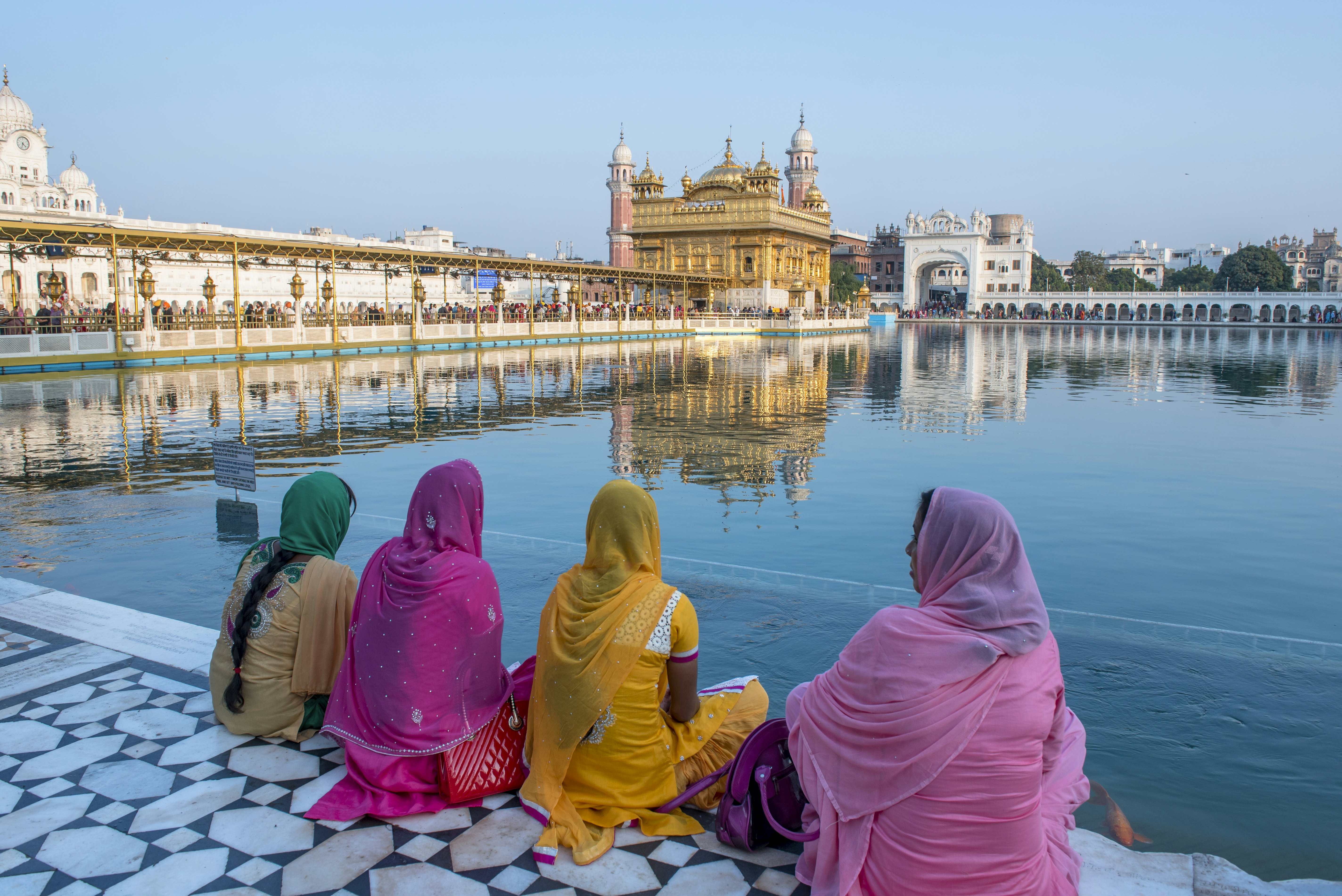
Do I have to cover up?
Tank tops and shorts may be fine in Goa and Mumbai, but in general, dress modestly and cover up your arms and legs – loose cotton or linen pants and long-sleeved tops or shirts is the way to go. At temples and other religious sites, you may have to also cover your head and shoulders, so carry a dupatta or scarf when you’re out and about. And always remove your shoes before entering religious sites and people’s homes (unless told otherwise).
Which shots do I need before I travel to India?
While there is no official requirement, vaccinations for diphtheria and tetanus, hepatitis A and B, polio and typhoid are usually recommended, in addition to childhood vaccinations for measles, mumps, rubella and varicella.
You should also consider vaccinations for Japanese B encephalitis, meningitis and rabies. Malaria is prevalent in India so consult your healthcare provider about taking a course of anti-malarial tablets. In any case, always take precautions against mosquitos – wear long sleeves and pants, apply mosquito repellent or use a plug-in mosquito killer, and sleep under a mosquito net. And don't forget to get travel insurance that covers medical emergencies and hospitalization.
Can I drink the tap water and eat street food?
Tap water is not potable in India and you should avoid drinking it or brushing your teeth with it; this applies to ice in drinks as well. Most hotels and restaurants offer filtered water or you can buy bottled water almost anywhere. Skip uncooked foods like salads and dishes with coriander chutney, which may have been washed with contaminated water. Street food like chaat, particularly pani puri, should be avoided or eaten at restaurants; it may not be an authentic experience but your stomach will thank you for it.








